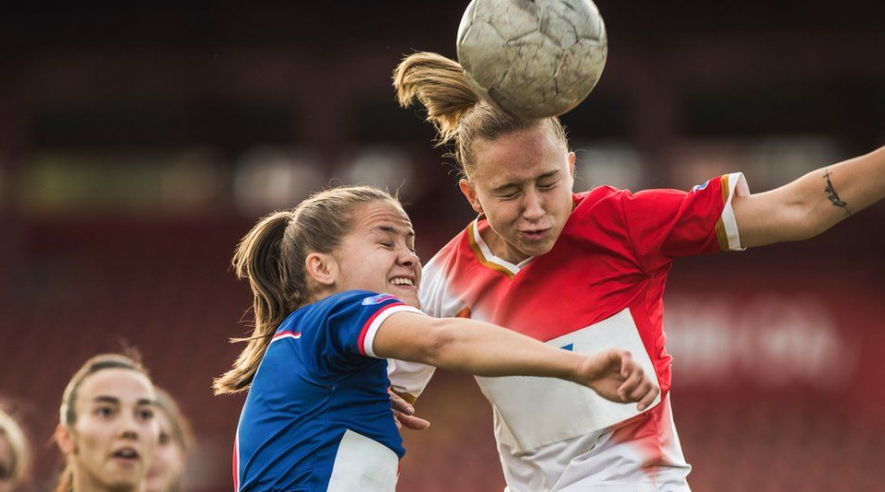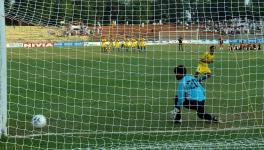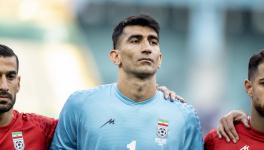Brain First, Headers Later: Experts Agree on Changing System To Protect Young Footballers

The FA guidelines are pretty comprehensive and stipulates limits on how much heading children older than 12 should do — a “graduated approach” from ages 12-15 in practice, while kids from the age of 16-17 would be restricted to one session per week.
Earlier this week, the Scottish, English and Northern Ireland Football Associations brought out updated guidelines for grassroots coaches. As per the new directives, children under the age of 12 years will no longer be trained to head footballs during practice sessions. The guidelines, set following recommendations by a research paper on the influence of football on lifelong health and dementia (FIELD) by Glasgow University last year, is pretty comprehensive and stipulates limits on how much heading children older than 12 should do. There will be a “graduated approach” for kids from ages 12-15 in practice while kids aged 16 and 17, training would be restricted to one session per week.
There are still a lot of grey areas in the study on the effects of heading on the brain. The Scottish research concludes that former professional players were less likely to die from common causes such as heart diseases, cancer and were more likely to die from Dementia. But, there is still no conclusive evidence suggesting a direct correlation between heading the ball and lasting brain damage.
However, there has been an increased drive across sporting disciplines on head injuries and sports-related concussions, and football authorities are slowly but surely taking cognizance. The training ban — similar restrictions have been in place in the US since 2015 — is a sign the establishment doesn't want to take a chance on this issue.
Also Read | No Country for Strikers: The Forgotten Goal Poachers of Indian Football
Rightfully so, says former England and Newcastle United star Alan Shearer. Shearer has had a personal scare. He believes that continuously heading the ball might have damaged his brain. His apprehensions began after seeing the movie Concussion, which depicts the true life story of a doctor and his struggle to make the establishment realise the debilitating brain damage NFL players suffer from following the pounding they receive in their pro careers. The striker, 49, who scored 30 goals for England in his international career, made a documentary for the BBC investigating the potential links between Dementia and football. In the documentary, he worked with scientists at the University of Stirling, who measured his brain functions before and after a session of heading a new ball 20 times.
The findings of that experiment, again, may not have been conclusive, but Shearer believes there is a correlation between the two and he has played a major role in spreading awareness on the cons of heading.
“Kids in our country (England) very rarely head in the game, anyway,” said Shearer, who was in Mumbai for a promotional event. “In terms of that, they are not taking much away from the training. They don’t want them to do so much in the game but when they are young the brain is still growing. So, there will be plenty of time to practice when they are at an older age.”
With the kind of coaching processes, and the steep developmental curve the kids undergo, catering to the demands of the professional set-up in the game, learning a skill at a later stage could handicap the player when he or she hits hits the pro leagues. That is the apprehension former Indian football team skipper Renedy Singh expressed even while agreeing with the FA guidelines.
Also Read | Metal Over Mettle: Indian Wrestling Story From Asian Championships
“This is a tough one as the maximum number of goals are achieved by headers so it is important that the kids are trained, yes we will avoid the grassroots for the kids under the age of 12, but as soon as they reach 14, we will have to start training them even if it is minimal,” said Renedy, who coaches players across various age groups. “It is essential for kids to understand the techniques by the time they reach 19-20. If you do not have a good header in the team, you are not going to get as many goals as you want.”
Shearer and Renedy, however, are on the same page when talking about potential for brain damage by forcing young kids to head the ball. Their sentiments are echoed by researchers, doctors, and footballers themselves, who feel the risks are real and nothing should be left to chance.
A Consensus Statement published in the British Journal of Sports Medicine, which summarises details of the Head Injury Summit held in New York in 2017, explains how young players struggle with predicting the flight of the ball, following which they have to coordinate body actions and movements necessary to intercept it before head-ball contact. While considering child development, research supports that heading is a complex motor skill that most children might not learn, much less master, until the age of 10-12 years.
Dr. Rajat Chauhan, a musculoskeletal doctor and a sports medicine specialist based in New Delhi, cites the findings by the experts in the summit while saying that such training restrictions should be set by all football governing bodies.
“I think it is a good call because sometimes such things are really relevant,” said Dr. Chauhan. “The gold standard of examining the brain is through an autopsy so the actual impact or damage to the brain can only be deciphered once a person is dead. We can’t wait for that to happen.”
The last point is hugely relevant. Research into the instant effects of football heading alone is inadequate and the data on later consequences of heading are mixed and limited. An inverse correlation between heading exposure and MRI measures of cortical thickness in former professional footballers has been associated with cognitive performance. But again, the data is mixed across the few imaging studies done till date, with no direct correlation reported in others.
Also Read | The Australian Hockey Secret
Conclusive scientific evidence was not the criteria which prompted the Irish Football Association to go ahead with the decision. The governing body felt it needs to ensure safety of the youngsters getting into the sport, who will essentially be driving its future. “Our football committee has reviewed and approved the new guidelines. As an association we believe this is the right direction of travel and are confident it will be good for the game, and those who play it,” Irish FA chief executive Patrick Nelson was quoted as saying by the BBC.
The ban is limited to training sessions and does not apply to matches and there is a valid reason for that. “Our research has shown that heading is rare in youth football matches so this guidance is a responsible development to our grassroots coaching without impacting the enjoyment that children of all ages take from playing the game,” English FA CEO Mark Bullingham was quoted in the media post the announcement.
The FA confirmed the updated guidelines are based on the UEFA (Union of European Football Associations) Medical Committee recommendations. The UEFA will bring out its own Europe-wide guidelines later this year.
Get the latest reports & analysis with people's perspective on Protests, movements & deep analytical videos, discussions of the current affairs in your Telegram app. Subscribe to NewsClick's Telegram channel & get Real-Time updates on stories, as they get published on our website.
























